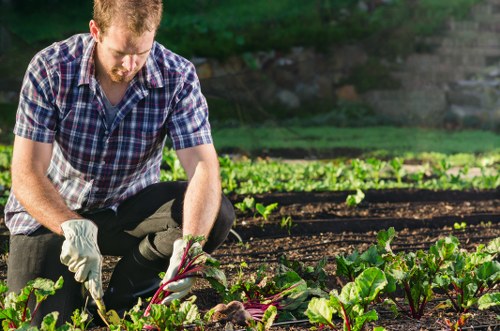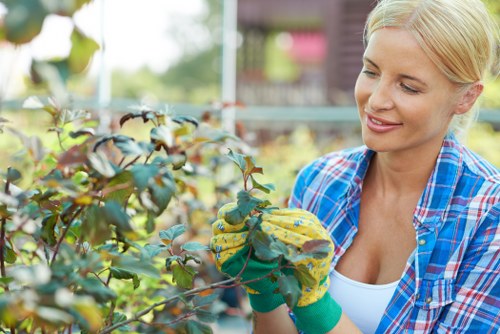Lawn Turf Installation Maze Hill

Introduction to Lawn Turf Installation in Maze Hill
Creating a lush, green lawn enhances the beauty and value of your property. If you're a resident of Maze Hill, understanding the process of lawn turf installation can help you achieve the perfect outdoor space.
Whether you’re looking to replace an existing lawn or start fresh, professional turf installation ensures a healthy and vibrant yard. This article will guide you through the essentials of turf installation in Maze Hill, from selecting the right type of turf to maintenance tips.
With the right approach, you can enjoy a beautiful lawn that withstands the local climate and conditions. Let’s explore the steps and considerations involved in installing lawn turf in Maze Hill.

Benefits of Installing Lawn Turf
Installing turf offers numerous advantages over natural grass or other ground coverings. Turf provides immediate results, transforming your yard overnight.
One of the main benefits is low maintenance. Turf is designed to require less water and fertilizer, saving you time and money in the long run.
Additionally, turf is durable and can handle heavy foot traffic, making it ideal for families with children and pets. It also helps in preventing soil erosion and reduces weed growth, ensuring a pristine lawn year-round.

Choosing the Right Turf for Maze Hill
Selecting the appropriate type of turf is crucial for the success of your lawn installation. Factors such as climate, soil type, and intended use play a significant role in this decision.
In Maze Hill, it's best to choose turf varieties that thrive in temperate climates. Common options include Kentucky Bluegrass, Bermuda, and Fescue, each offering different textures and resilience.
Consulting with local turf suppliers can provide insights into the best choices for your specific area. They can recommend blends that resist local pests and diseases, ensuring a healthy and sustainable lawn.

Preparing the Site for Turf Installation
Proper site preparation is essential for successful turf installation. Start by clearing the area of any debris, weeds, or old grass. This ensures that the new turf has a clean surface to root into.
Next, level the soil to prevent water pooling and promote even growth. Incorporating organic matter can improve soil fertility and drainage.
Finally, laying a layer of topsoil provides a nutrient-rich base for the turf. Proper preparation not only enhances the appearance of your lawn but also its longevity.

Step-by-Step Turf Installation Process
Installing turf involves several key steps that must be executed meticulously for optimal results.
1. Measuring the Area: Accurate measurements ensure you purchase the right amount of turf, avoiding shortages or excess.
2. Laying the Turf: Begin at a straight edge, such as a driveway or path, and lay the turf pieces tightly together to prevent gaps. Stagger the joints to enhance stability and appearance.
- Ensure the turf is flat and free of wrinkles.
- Trim excess turf around edges for a neat finish.
3. Securing the Turf: Lightly roll the turf after installation to press it firmly into place, promoting good contact with the soil.

Maintenance Tips for New Turf
Proper maintenance is key to keeping your newly installed turf healthy and vibrant. Start by watering the turf regularly to help the roots establish.
Avoid heavy foot traffic on the lawn during the initial weeks. Gradually increase usage as the turf takes root.
Mowing should be done once the grass reaches about 3 inches in height. Regular mowing encourages dense growth and prevents weed invasion.

Common Mistakes to Avoid
Many homeowners make avoidable mistakes during turf installation. One common error is poor site preparation, which can lead to uneven growth and poor root establishment.
Another mistake is improper watering. Overwatering can cause fungal diseases, while under-watering stresses the turf.
Additionally, neglecting to choose the right turf type for your climate can result in poor performance and higher maintenance needs.

Cost Factors in Turf Installation Maze Hill
The cost of turf installation varies based on several factors. The size of the area, type of turf, and preparation needed all influence the overall price.
Labor costs also play a significant role, especially if you hire professionals for the installation. High-quality turf may cost more upfront but can save money in maintenance over time.
Additional costs may include soil amendments, irrigation systems, and ongoing maintenance services.

Why Choose Local Lawn Turf Installation Services
Opting for local lawn turf installers in Maze Hill offers numerous benefits. Local experts understand the specific soil conditions and climate, ensuring the best turf selection and installation techniques.
They can provide personalized service, addressing your unique lawn needs and preferences. Additionally, supporting local businesses contributes to the community’s economy.
Local installers are also more accessible for follow-up services and maintenance, ensuring your lawn remains in top condition.

Nearby Areas to Maze Hill for Lawn Turf Installation
If you reside near Maze Hill, several nearby areas also benefit from professional lawn turf installation services. Each area has its own unique features that may influence your turf choice.
- Staplehurst: Just a short drive from Maze Hill, Staplehurst offers diverse soil types requiring tailored turf solutions.
- Elmbridge: Known for its family-friendly neighborhoods, Elmbridge residents often seek durable and low-maintenance turf.
- Shirley With its expansive gardens, Shirley benefits from high-quality turf that complements large outdoor spaces.
- Wigginton: The proximity to local parks in Wigginton makes it ideal for turf varieties that can withstand frequent use.
- Charnwood: Charnwood's climate conditions are well-suited for specific grass types recommended by local experts.
- Longthorpe: Residents here prefer turf that enhances the aesthetic appeal of their well-manicured lawns.
- Westbourne: Westbourne's unique soil composition requires specialized turf installation techniques.
- East Meadow: The community in East Meadow values sustainable turf options that are environmentally friendly.
- Northgate: Northgate's older homes often have established gardens needing high-quality turf replacements.
- Southridge: Southridge's hilly terrain may require turf installation experts to ensure even coverage.
- Greenfield: Greenfield's lush neighborhoods are perfect for vibrant and resilient turf types.
- Riverside: Proximity to water bodies in Riverside influences the choice of turf that resists waterlogging.
Conclusion
Installing lawn turf in Maze Hill can transform your outdoor space into a beautiful and functional area. By choosing the right turf, preparing the site properly, and following maintenance best practices, you can enjoy a lush lawn for years to come.
Working with local professionals ensures that your turf installation is tailored to the unique conditions of Maze Hill and its surrounding areas. Embrace the process and soon you’ll have a vibrant lawn that enhances your property’s appeal.
Frequently Asked Questions
1. How long does it take for new turf to establish?
Newly installed turf typically takes about two weeks to establish roots in the soil. Full establishment can take up to three months, depending on weather conditions and maintenance.
2. Can I install turf myself, or should I hire professionals?
While DIY installation is possible, hiring professionals ensures proper site preparation, turf selection, and installation techniques, leading to a healthier and more durable lawn.
3. How often should I water my new turf?
Initially, water the turf daily for the first two weeks to help roots establish. Afterward, reduce watering to 2-3 times a week, depending on rainfall and soil conditions.
4. What type of turf is best for high-traffic areas?
For high-traffic areas, consider durable turf varieties like Bermuda or Fescue, which can withstand frequent use without significant wear.
5. How can I prevent weeds from growing in my new turf?
Proper site preparation, including removing existing weeds and ensuring good soil contact, helps prevent weed growth. Additionally, regular mowing and maintenance discourage weeds from taking hold.